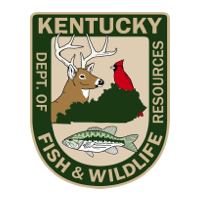Fall is for planting
Published 6:29 am Monday, October 23, 2017
Arbor Day, the celebration of the value of trees in our lives is celebrated in spring. Many municipalities plant trees in public areas as part of their Arbor Day celebration. We also distribute seedlings in schools and to other citizens. With proper care, trees can be planted throughout the Commonwealth at almost any time of the year. However, in Kentucky the VERY BEST time to plant new trees and shrubs is the fall.
Late October until about the first of the year is the best time to plant for several reasons. The drought-breaking rains of fall have added moisture back to soils made hard and droughty by summer heat. The act of digging trees and shrubs for transplanting necessitates cutting roots. New roots must be regenerated if they are to become reestablished in the new location. With cooler temperatures and no foliage, the water demands for plants with limited or damaged root systems is significantly less.
We think of woody plants as growing in spring and early summer and then going dormant in fall and winter. This is true, at least for the above-ground parts we see. Roots grow most vigorously when the soil is above freezing and below 50 to 60°F. For us, this is most of the fall and winter. By planting in the fall we take advantage of roots being able to regenerate. This allows the plant to efficiently absorb sufficient water in the abundance of new roots when growth begins in spring. These newly transplanted plants can then maintain their water requirements throughout the hot, dry summer.
Fall really is for planting but we need to make sure that the plant will thrive in its new home. Watching plants die that are not adapted to a site is frustrating and a waste of money. Take a look at Landscape Site Assessment (http://www2.ca.uky.edu/agcomm/pubs/ID/ID244/ID244.pdf) to help determine the cultural characteristics of your landscape. One of the most important and most neglected assessments is determining if the soil will drain properly. Doing a percolation test, perk test for short, is simple and easy and can even be a part of the planting process. Consult Soil Percolation: A Key to Survival of Landscape Plants (http://www2.ca.uky.edu/agcomm/pubs/ID/ID237/ID237.pdf) for more information. Plants that are not adapted to a site are less winter hardy and more prone to disease and insect problems. Approximately 80-90% of the samples that come into the UK Plant Disease Diagnostic Labs can be traced back to improper site adaptability and / or improper installation. If you discover that your site is poorly drained, you can then go to the list of flood tolerant species.
One of the secrets of a healthy landscape is species diversity. Neighborhoods planted mainly with ash trees or Bradford pears have experienced the disappointment of having to start over again. For help in selecting underutilized trees, look at After Your Ash Has Died, Making an Informed Decision on What to Replant (http://www2.ca.uky.edu/agcomm/pubs/ID/ID241/ID241.pdf). Diversity adds interest throughout the four seasons. It also results in healthier, more attractive landscapes that require fewer pesticides.
Installing a new tree or shrub in its new home can be exciting…. in a good way. It can also be exciting in a bad way. To keep “shocking” surprises from happening, always remember to call 811 a week before you dig. It’s the law! This free service will prevent you from accidently hitting buried utilities and perhaps being injured or being billed for the damage you caused.
Guidelines for planting can be found in Planting Balled and Burlapped Trees and Shrubs in Your Landscape (http://www2.ca.uky.edu/agcomm/pubs/ho/ho91/ho91.pdf), Planting Container Grown Trees and Shrubs in Your Landscape (http://www2.ca.uky.edu/agcomm/pubs/HO/HO114/HO114.pdf), and Planting Bareroot Trees and Shrubs in Your Landscape
(http://www2.ca.uky.edu/agcomm/pubs/HO/HO113/HO113.pdf). Which is best? All can be great. It depends on the plant, the size, and the site.
After your new trees and shrubs have been properly installed you should mulch it. Mulching is either one of the best things we do for a plant or one of the worst things we do to a plant. Mulch Myths (http://www2.ca.uky.edu/agcomm/pubs/ho/ho106/ho106.pdf) will tell you how to mulch and what products to use. With the exception of bare root trees, most plants do not need to be staked. Staking can damage trunks and can prevent the tree from reestablishing as rapidly. Proper watering for the first year or two is much more important than adding fertilizer.
Selecting the appropriate trees and shrubs and installing them properly can improve the value of your residence, make a park a nicer place to visit, and make our communities a healthier place to live. It is the green infrastructure (trees and shrubs), more than any other single factor that makes Kentucky’s suburban and urban areas sustainable and livable places.
For additional information on this or other topics, consult the Bell County Cooperative Extension Service.
Stacy White is the Bell County extension agent for agriculture and natural resources. Educational programs of the University of Kentucky Cooperative Extension Service serve all people regardless of race, color, age, sex, religion, disability or national origin.






